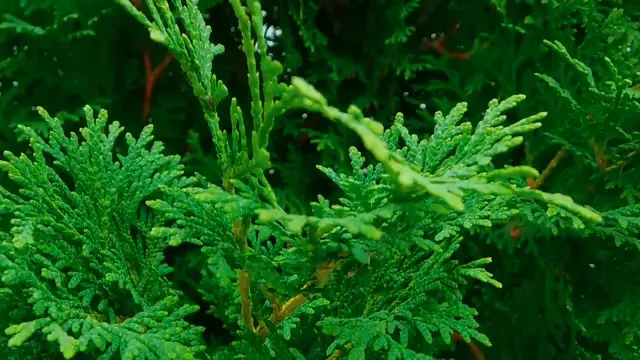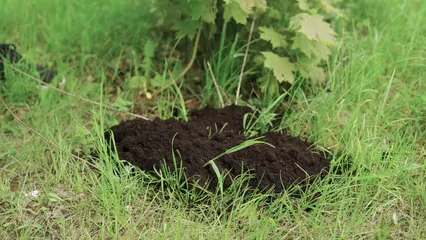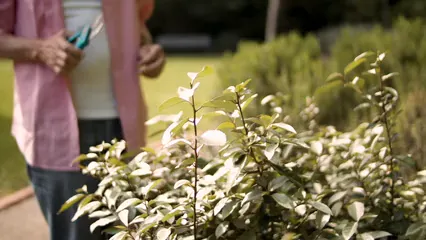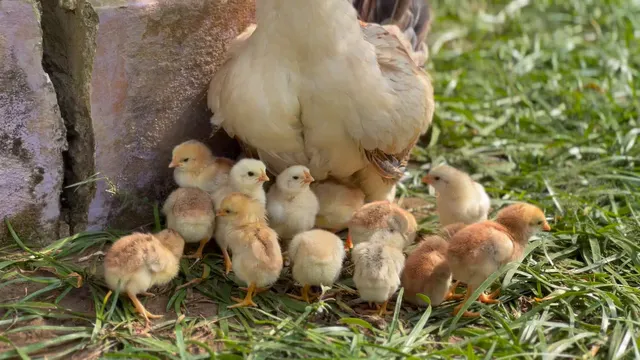

Compacta Holly Plant: A Comprehensive Guide to Ilex crenata ‘Compacta’
Introduction
The Compacta Holly plant is a favorite among gardeners. Known for its versatility, this shrub fits perfectly in various landscaping styles. Its low-maintenance nature makes it ideal for busy homeowners. Plus, it boasts lush, evergreen foliage that adds year-round beauty to any garden.
If you’re looking to enhance your gardening experience, consider investing in a pair of Pruning Shears. A good pair can make all the difference in maintaining the shape and health of your plants. Trust me, your plants will thank you for it!

Summary and Overview
The Compacta Holly, scientifically named Ilex crenata ‘Compacta,’ is commonly referred to as Compact Japanese Holly or simply Compacta Holly. This shrub is part of the Aquifoliaceae family and is celebrated for its dense, rounded form. Typically, it grows between 3 to 6 feet tall and wide, making it an excellent choice for foundation plantings or hedges. The plant thrives in various soil types, from sandy to clay, and is known for its adaptability.
Its evergreen leaves remain vibrant throughout the year, providing a lush backdrop for other plants. As a dioecious species, it requires both male and female plants for pollination, resulting in small black berries on female specimens. These berries not only add interest but also attract birds and beneficial insects to your garden.
Overall, the Compacta Holly is a practical choice for those seeking a beautiful, hardy addition to their landscaping. With its compact size and evergreen appeal, it works well in formal gardens, shrub borders, and mass plantings. And speaking of beauty, don’t forget to pamper your plants with some Organic Fertilizer to keep them thriving!

Growth Habit
The Compacta Holly has a moderate growth rate. It typically reaches a mature height of 3 to 6 feet. This shrub also spans about 3 to 6 feet wide. Its dense, rounded form makes it visually appealing. This feature is ideal for a variety of landscape designs. You can use it as a foundation plant, a hedge, or in mass plantings. Its compact size allows for versatility in both small and large gardens.
Fruit and Flowers
The Compacta Holly produces small, greenish-white flowers. These flowers bloom in the spring and are often fragrant. They grow in clusters of one to three. After pollination, female plants bear small, black fruit. This fruit appears in late summer and persists into winter. It provides food for birds and other wildlife, enhancing your garden’s ecosystem. Both the flowers and fruit add interest to your landscape.
Growing Conditions
Soil Requirements
Compacta Holly prefers well-drained soil. It thrives in loamy or sandy textures but can adapt to clay. The ideal soil pH ranges from slightly acidic to neutral, between 6.0 and 7.0. To improve drainage, mix organic matter into the soil. This could include compost or aged manure. Regularly amending your soil helps maintain fertility. If your soil is heavy, consider Raised Beds to enhance drainage.

Light and Water Needs
This shrub flourishes in full sun to partial shade. Aim for at least six hours of direct sunlight daily. Adequate moisture is crucial for healthy growth. Water the plant regularly, especially during dry spells. Aim for deep watering to encourage strong root development. It’s best to allow the top inch of soil to dry out between waterings. Keeping the soil consistently moist but not soggy will promote optimal growth.
Hardiness Zones
The Compacta Holly thrives in USDA hardiness zones 6 to 8. This range includes regions with mild to moderate winters. It can tolerate temperatures as low as -10°F to 20°F. However, extreme heat and humidity can pose challenges, especially in zones 8 and 9.
When planting Compacta Holly, consider your local climate. It prefers areas with well-drained soil and some sun. While it’s adaptable, it performs best in environments that mimic its native habitat. A spot with partial shade can help protect it from scorching summer sun. This adaptability allows it to flourish in various settings, from urban gardens to suburban landscapes. And while you’re at it, why not grab a Soil pH Test Kit to ensure your soil is just right!

Maintenance and Care
Pruning and Shaping
To keep your Compacta Holly looking its best, regular pruning is essential. Aim to prune in late winter or early spring before new growth begins. This timing minimizes stress and encourages healthy growth. Focus on removing dead or damaged branches first. Shaping the plant can be done by lightly trimming the outer growth, promoting a fuller appearance.
Use sharp, clean pruning shears to make precise cuts. Avoid cutting into old wood, as this can hinder growth. A light hand is key; you don’t want to over-prune and lose the shrub’s natural form. With proper care, you can maintain its compact shape and promote vigorous growth.

Pest and Disease Management
Compacta Holly can face a few common pests and diseases. Watch for spider mites, scale, and nematodes. These pests can cause yellowing leaves and overall decline. To prevent infestations, keep the area around the plant clean and debris-free. Additionally, regular inspections can help catch issues early.
For treatment, consider insecticidal soap or neem oil if pests appear. Always follow the instructions on the product label. For diseases, ensure good air circulation to prevent fungal issues like root rot. If you notice yellowing leaves, test the soil for pH imbalances, as alkaline soils can lead to problems.

Fertilization and Mulching
Fertilization is vital for healthy growth. Use a balanced, slow-release fertilizer in early spring. This will provide essential nutrients throughout the growing season. Organic options, like compost or well-rotted manure, also work well.
Mulching offers numerous benefits. A 2- to 3-inch layer of mulch helps retain moisture and suppress weeds. This is especially important during hot, dry spells. Organic mulch, such as bark or straw, also improves soil structure as it decomposes. Aim to keep mulch a few inches away from the plant’s base to avoid rot. With proper fertilization and mulching, your Compacta Holly will thrive beautifully in your garden.

Proper mulching is essential for maintaining the health of your garden. Learn more about effective mulching techniques here.
Landscape Uses
Foundation Planting
Compacta Holly makes an excellent foundation plant. Its lush, dark green foliage adds visual interest to any home’s exterior. The dense, rounded form creates a solid structure, enhancing curb appeal. You can plant it alongside walkways or near entryways for a welcoming feel. Additionally, its low height ensures it won’t obscure windows or views. This shrub requires minimal maintenance, making it a practical choice for busy homeowners. You might also want to consider adding some decorative planters to further enhance the aesthetics of your garden!

Hedges and Borders
Creating hedges and borders with Compacta Holly is a fantastic idea. This shrub grows densely, providing privacy and definition to your landscape. When planting, space each shrub about 3 to 4 feet apart. This allows them to fill in nicely without overcrowding. For a more formal look, consider planting in a straight line. Alternatively, a staggered arrangement can offer a more natural appearance. Regular pruning helps maintain the desired height and shape.
Mass Planting and Groupings
Mass plantings of Compacta Holly can create a stunning visual impact in your garden. When grouped together, they form a lush green backdrop that highlights flowering plants. Consider pairing them with bright perennials like daylilies or black-eyed Susans for contrast. Their evergreen nature ensures your garden remains vibrant year-round. This versatility makes them suitable for both formal and informal settings, enhancing the overall aesthetic of your landscape. And while you’re at it, why not add a garden trellis for climbing plants to add even more character?

Wildlife Value
Pollinators and Birds
Compacta Holly plays a vital role in attracting wildlife. Its small, fragrant flowers draw in bees and other pollinators, supporting local ecosystems. These insects thrive on the nectar during spring, promoting healthy plant life. Additionally, female plants produce small black berries in late summer. These berries provide food for birds and wildlife during winter months when other food sources are scarce. By incorporating Compacta Holly, you not only beautify your garden but also support essential wildlife. To further enhance your garden’s wildlife appeal, consider installing a bird feeder nearby!

Challenges and Considerations
Potential Issues
While the Compacta Holly is a hardy shrub, it does face some challenges. Pests like spider mites and scale can occasionally invade, leading to yellowing leaves. Environmental stressors, like extreme heat or poor soil conditions, can also affect its health. To mitigate these issues, maintain good air circulation around the plant. Regularly inspecting for pests can help catch problems early. If you notice any infestations, consider using insecticidal soap or neem oil as a treatment. Keeping the area around your Compacta Holly clean will also help prevent pest problems.
Toxicity Concerns
The berries of the Compacta Holly are mildly toxic. While they can cause minor reactions in humans, such as nausea or vomiting, they pose a low risk if ingested. For pets, it’s best to keep them away from the plant’s berries. If you do handle the plant, wearing gloves may be a good precaution. Always supervise young children and pets when exploring the garden, ensuring they don’t consume any plant material.

Conclusion
In summary, the Compacta Holly is a versatile shrub that offers beauty and practicality. Its lush, evergreen foliage creates visual interest year-round, making it a favorite in landscaping. With its low-maintenance nature and adaptability, it’s an excellent choice for various garden styles. Whether you’re enhancing your foundation or creating a hedge, consider adding Compacta Holly to your landscape for its benefits to both gardens and wildlife. And while you’re at it, don’t forget to check out a Gardening Tools Set to make your gardening tasks a breeze!

FAQs
What is the best way to care for a Compacta Holly plant?
Caring for your Compacta Holly is straightforward. Ensure it receives full sun to partial shade for optimal growth. Water regularly, allowing the top inch of soil to dry out between waterings. Fertilize in spring with a balanced fertilizer to support growth.
How tall does the Compacta Holly grow?
The Compacta Holly typically matures between 3 to 6 feet tall and wide. Its dense, rounded form makes it a great choice for compact spaces.
Can Compacta Holly be used in containers?
Yes, Compacta Holly can thrive in containers. Choose a pot with good drainage and use a high-quality potting mix. Ensure it gets enough sunlight and water to keep the soil consistently moist.
What are the common pests that affect Compacta Holly?
Common pests include spider mites and scale insects. To prevent these, keep the area clean and inspect plants regularly. If you spot pests, treat them promptly with insecticidal soap or neem oil.
Is Compacta Holly deer-resistant?
Yes, the Compacta Holly is resistant to deer. Its dense foliage and low-maintenance nature make it an excellent choice for gardens in areas with deer populations.
Please let us know what you think about our content by leaving a comment down below!
Thank you for reading till here 🙂
All images from Pexels



